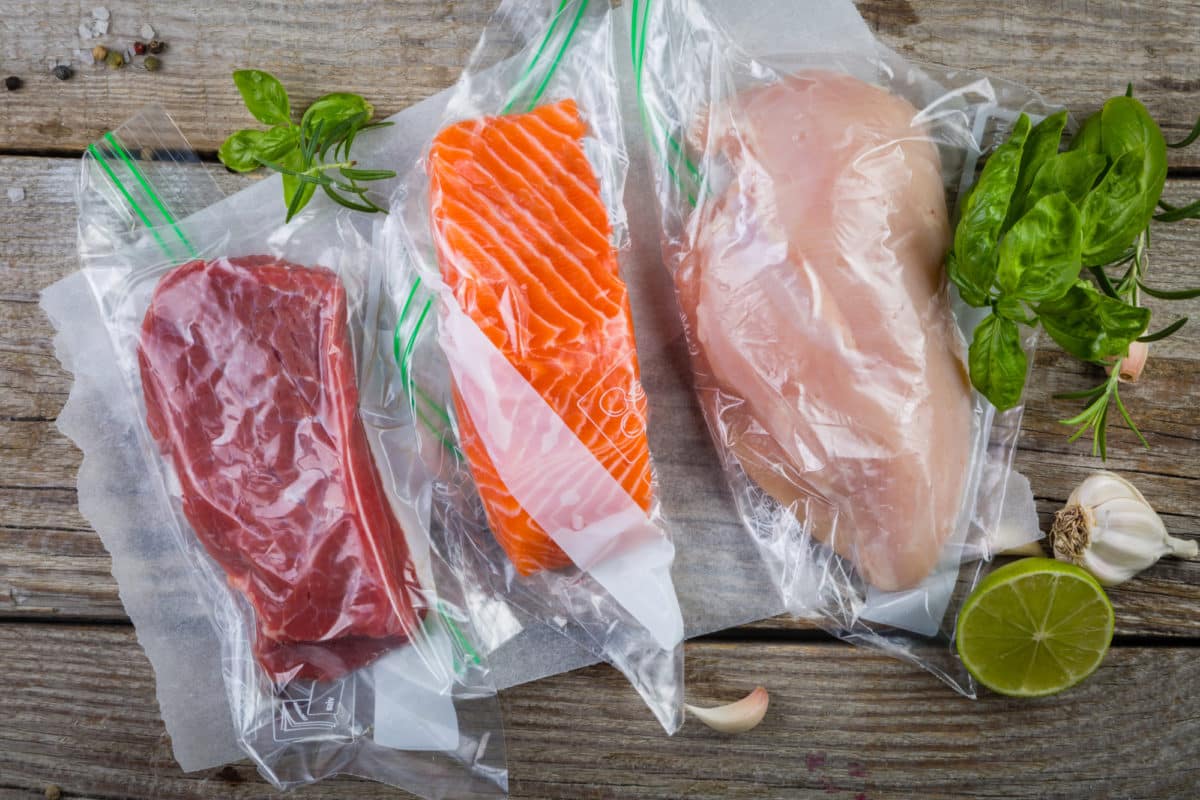There are few things restaurant cooks dread more than a customer who sends back a meal. Was the fish not fresh, the meat overcooked, the pasta over-salted? There are so many ways in which we could fail to deliver the best meal possible.
When I cooked at Restaurant Nora with my co-author Brett Grohsgal, the usual cause of returned meals was tough meat. We’d shrug it off and send the waiter back to the customers’ table to explain the reason. Back then, in the early 1990s, Nora was considered cutting-edge for serving free-range meats and organic produce.
Free-range and pastured meat is tougher than than that of conventionally raised animals. Free-range animals roam pastures, foraging for their meals and eating grass instead of grain. They develop and use more muscles and have less fat. This results in better flavor, but the meat is tougher than what we’ve become accustomed to from animals that were raised in feedlots with barely enough room to turn around, fattened on a diet of grains and corn to grow quickly. Conventionally raised animals are tender — but less flavorful.
At Nora’s, we braised most of the meat we served; it was the most sure-fire way to tenderize it. We made the marginally-tender cuts into scaloppini – boneless cutlets pounded thin. The pounding shortened and tenderized the lean muscles. With few exceptions, meat was served well done. Every once in awhile we served tenderloin and rib-eye steaks (the most tender cuts). But because the restaurant purchased whole animals, we had only about 27 kg (60 pounds) of tender meat from an animal that had yielded about 204 kg (450 pounds). The remainder varied in tenderness from lesser steaks to shank meat.
I thought about Nora the other day as I rummaged through my freezer looking for meat to cook. I usually have several packages of venison from a hunter friend. Given the provenance of the meat (wild, not-domesticated), I knew it would be tough but flavorful. Venison can be especially tricky. Because the meat is extra-lean, it really shouldn’t be cooked past rare or it becomes too dry. I picked out a package labeled “rump roast.”
Wild and venison were two words that, together, indicated tough meat. And where did the rump roast fall in the spectrum of tender? Should I cook it rare in the oven, like a roast beef? Should I braise it? Additionally perplexing, I didn’t know who had butchered and labeled the meat, so I couldn’t really be sure what cut I had. An internet search did not instill confidence in any one choice of cooking method or recipe.
I decided to cook the venison sous-vide, and that turned out to be the perfect answer.
Sous vide, a French term, means “under vacuum.” It’s a method of cooking food that has been vacuum-sealed in a plastic bag and immersed in water which is precisely controlled and circulated at a specified temperature.
The precision in the water temperature makes this method ideal for cooking a tough venison steak rare. For venison, I set the water temperature to 59°C (138°F) and left it, well-seasoned in its pouch, to gently cook for 6 hours. At between 54°C (130°F) and 60°C (140°F) the collagens began to break down, and in 6 hours the collagen had almost fully dissolved, providing an unctuous mouth-feel. Better still, the marinade permeated the entire roast. Because the water never heated above 59°C (138°F), the meat retained its perfect medium-rare juiciness and blood-red color. Just before serving, I browned the roast in a pan to caramelize it and add depth of flavor.
For me, sous vide is a revelation. When I talked with some chef friends about this, they immediately questioned food safety. If you’ve ever taken a ServSafe class (the food safety class required of all chefs in the United States), you’re familiar with the “danger zone,” in which food should not sit between the temperatures of 4°C – 60°C (39°F – 140°F) for more than 4 hours. In this temperature range bacteria can grow rapidly and cause food-borne illnesses. Some research suggests that pathogens will eventually be killed at temperatures above 54°C (130°F) and that the long/slow cooking of sous vide is sufficient. Whichever is true, when I trust the source of my food, I’m not concerned. If you’re unsure about safety, cook beef and venison to the recommended 61°C (141°F).
The applications of sous vide go beyond venison and beef. Brett’s farm houses about four hundred laying birds that provide eggs for his customers. After about 4 years, the birds pass their practical use and get “converted” to stewing meat. These old hens require a tender touch to soften the meat. Cooked sous vide, the birds tenderize without drying out.
This method of cooking meat works well for most cuts of free-range meats. Depending on your desired doneness for the meat, you can adjust the temperature setting.
Here’s a rough gauge:
- Beef (rare, medium-rare, medium): 50°C (122°F), 55°C (131°F), 59°C (138°F)
- Stew meat: 64°C (148°F)
- Chicken breasts: 62°C (143°F)
- Chicken thighs/legs: 66°C (150°F)
- Chicken wings: 77°C (170°F)
- Pork chops (medium-rare, medium, medium-well): 55°C (131°F), 58°C (136°F), 60°C (140°F)
- Lamb steaks (rare, medium-rare, medium) 50°C (122F°), 55°C (131°F), 59°C (138°F)
Sous vide has won me over: it adds another technique to better enjoy free-range meats.
Our recipe for rhubarb meat stew would be ideal for cooking by sous vide. If you use lamb, set the sous vide at 65°C (149°F); for beef 61°C (141°F). ![]()
